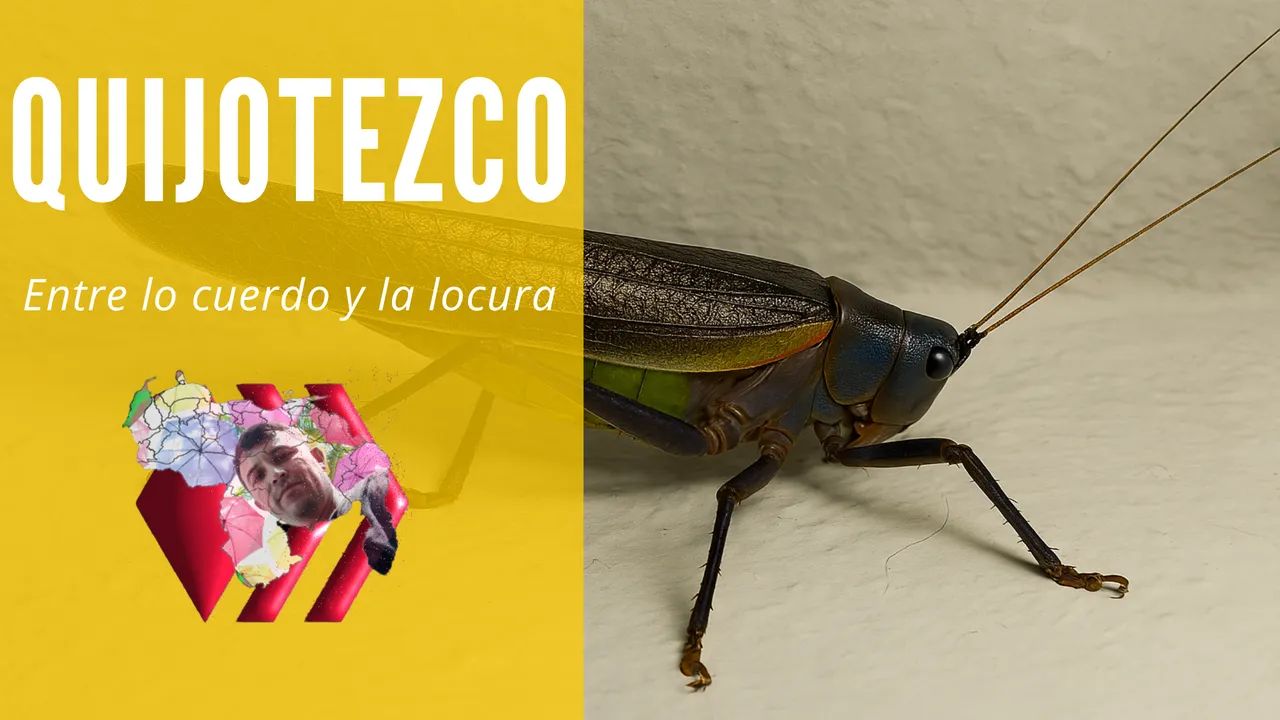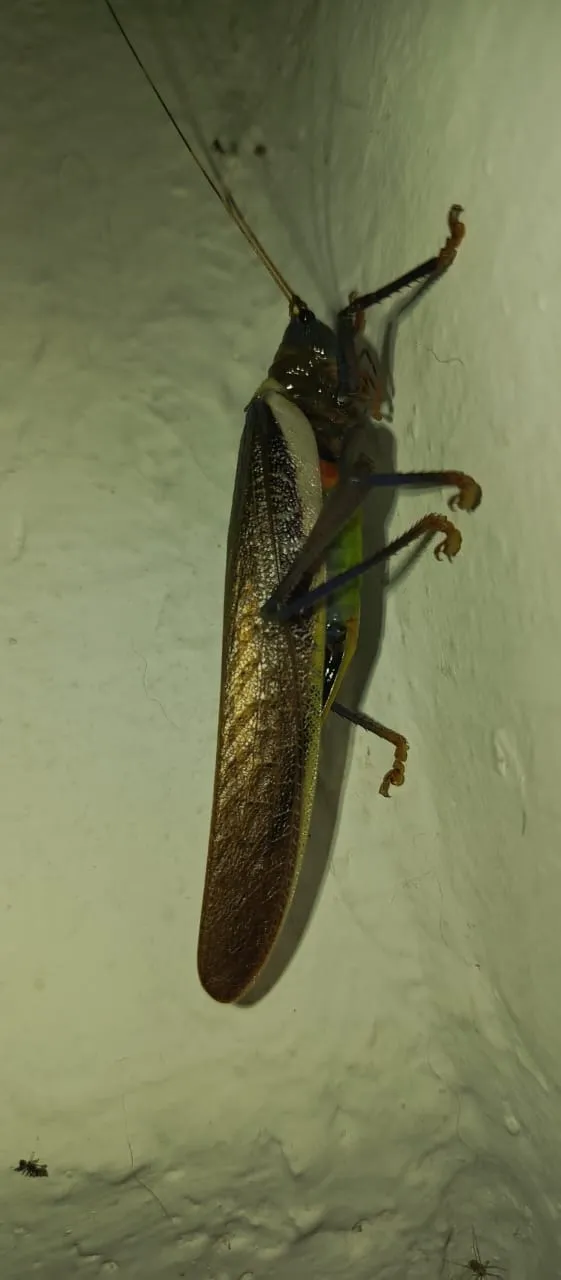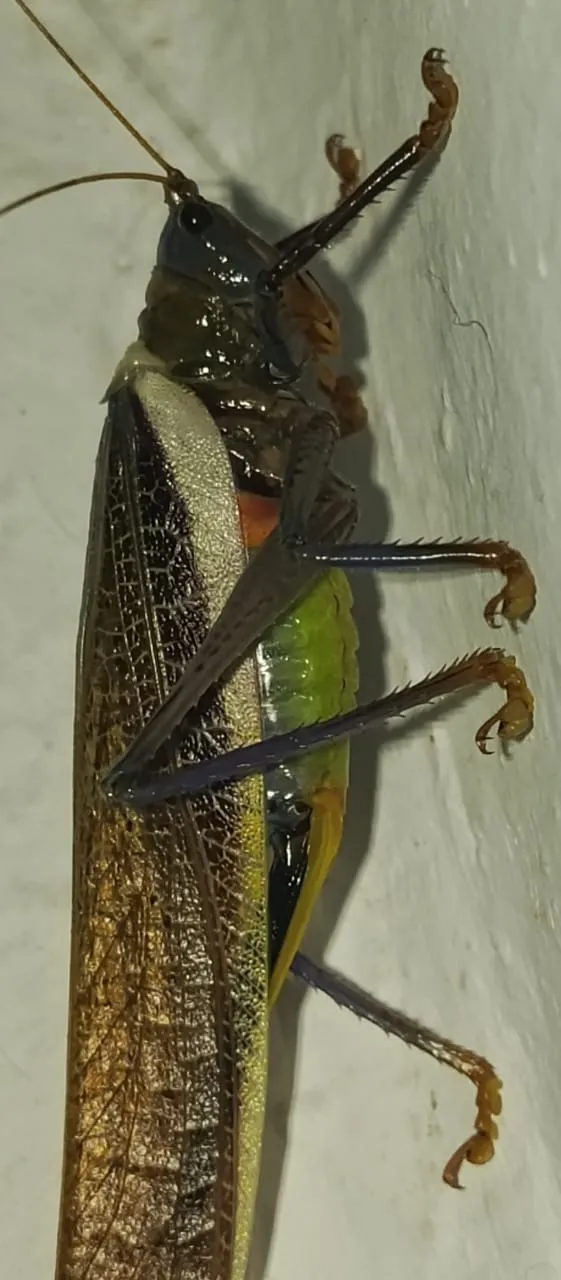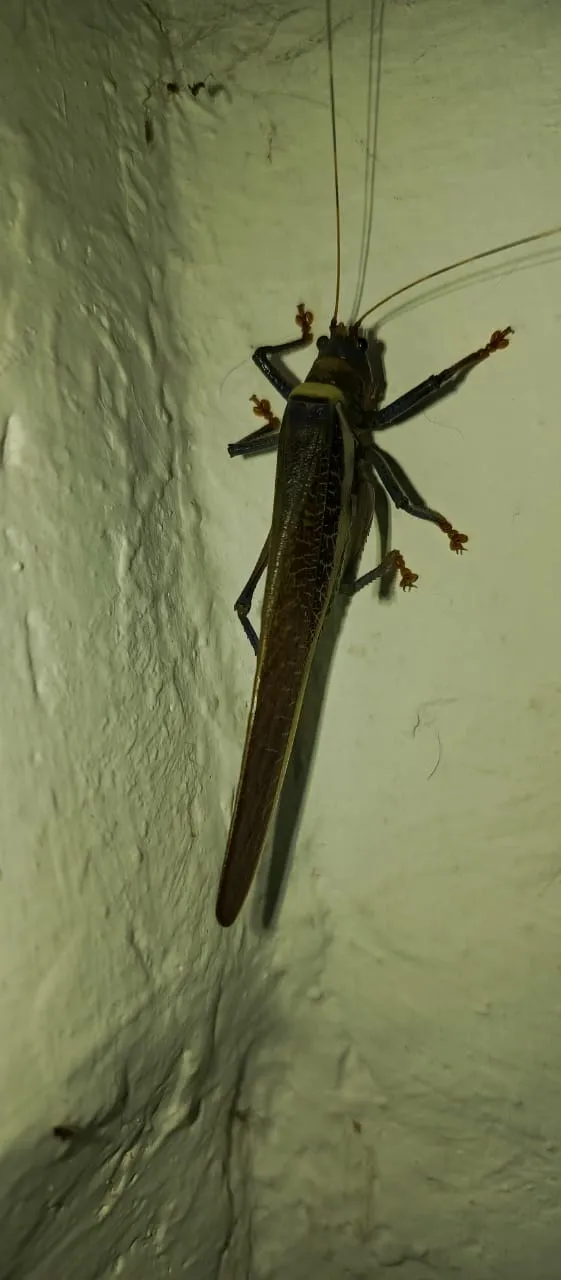

Bienvenidos

Welcome
Hola amigos!
No todos los días se recibe la visita de un ser tan peculiar como el Moncheca elegans, un saltamontes que encontré en las escaleras un mediodía, y se su nombre científico porque me dedique a buscarlo en la web. Su cuerpo, de un verde oliva oscuro, contrastaba con detalles en negro brillante y un toque de rojo en el rostro. No pude evitar detenerme, observarlo con detenimiento y preguntarme: ¿Quién eres tú, a que especie pertenecías?
Movido por la curiosidad, me sumergí en una búsqueda que me llevó a descubrir que este visitante pertenece a la familia Tettigoniidae, subfamilia Conocephalinae, y tribu Copiphorini. Su nombre científico, Moncheca elegans, fue acuñado por el entomólogo italiano Giglio-Tos en 1898 (ver: https://www.gbif.org/species/124407442 y http://orthoptera.archive.speciesfile.org/Common/basic/Taxa.aspx?TaxonNameID=1133984). Originario de regiones tropicales de América del Sur (ver: https://es.wikipedia.org/wiki/Moncheca)
Lo que más me fascinó fue su diseño natural: el macho posee una estructura llamada “estridulador”, una especie de lima con 114 dientes que utiliza para emitir sonidos. Su canto, descrito por Morris y Beier en 1982 (ver: https://www.gbif.org/species/124407442), es un zumbido sibilante y tembloroso, con energía que se extiende entre los 20 y 70 kHz, alcanzando su punto más fuerte cerca de los 34 kHz. Imaginar que ese sonido, imperceptible para el oído humano, forma parte de su lenguaje secreto, me hizo sentir como si hubiese descubierto una sinfonía oculta en mi propio hogar.
La morfología del Moncheca elegans también es digna de admiración. El cercus (apéndices simples o segmentados en el extremo del abdomen que generalmente actúan como órganos sensoriales) del macho, una estructura en forma de pie, y su décimo tergito (parte dorsal de un segmento corporal en artrópodos), completamente negro y brillante, le dan un aire de elegancia y misterio. Las hembras, por su parte, poseen un ovipositor perfectamente recto, más largo que sus patas traseras, lo que les permite depositar sus huevos con precisión quirúrgica. (ver: https://www.gbif.org/species/124407442)
Pero más allá de los datos científicos, lo que me conmovió fue la presencia misma de este ser en mi espacio cotidiano, este pequeño saltamontes me recordó que la belleza y la sorpresa aún tienen cabida. Su aparición fue como un poema visual, una pausa en el ruido del día, una invitación a mirar con otros ojos.
Me pregunté si su visita tenía algún significado. ¿Era acaso un símbolo de resiliencia, de adaptación? Después de todo, el Moncheca elegans ha sobrevivido en ecosistemas diversos. En él vi reflejada la capacidad de reinventarse, de cantar en frecuencias que pocos escuchan, de existir con elegancia en medio de lo cotidiano.
Hello friends!
It's not every day that you receive a visit from a creature as peculiar as the Moncheca elegans, a grasshopper I found on the stairs one afternoon, and I know its scientific name because I spent some time looking it up on the web. Its dark olive-green body contrasted with shiny black details and a hint of red on its face. I couldn't help but stop, observe it closely, and wonder: who are you? What species did you belong to?
Driven by curiosity, I immersed myself in a search that led me to discover that this visitor belongs to the Tettigoniidae family, Conocephalinae subfamily, and Copiphorini tribe. Its scientific name, Moncheca elegans, was coined by the Italian entomologist Giglio-Tos in 1898 (see: https://www.gbif.org/species/124407442 and http://orthoptera.archive.speciesfile.org/Common/basic/Taxa.aspx?TaxonNameID=1133984). It is native to tropical regions of South America (see: https://es.wikipedia.org/wiki/Moncheca).
What fascinated me most was its natural design: the male has a structure called a "stridulator," a file-like structure with 114 teeth that it uses to make sounds. Its song, described by Morris and Beier in 1982 (see: https://www.gbif.org/species/124407442), is a hissing, trembling drone, with energy ranging from 20 to 70 kHz, reaching its loudest point near 34 kHz. Imagining that this sound, imperceptible to the human ear, is part of its secret language made me feel as if I had discovered a hidden symphony in my own home.
The morphology of the Moncheca elegans is also worthy of admiration. The male's cercus (simple or segmented appendages at the end of the abdomen that generally act as sensory organs), a foot-like structure, and its tenth tergite (dorsal part of a body segment in arthropods), completely black and shiny, give it an air of elegance and mystery. Females, on the other hand, have a perfectly straight ovipositor, longer than their hind legs, allowing them to deposit their eggs with surgical precision. (See: https://www.gbif.org/species/124407442)
But beyond the scientific data, what moved me was the very presence of this creature in my everyday space. This tiny grasshopper reminded me that beauty and surprise still have a place. Its appearance was like a visual poem, a pause in the noise of the day, an invitation to look with different eyes.
I wondered if its visit had any meaning. Was it perhaps a symbol of resilience, of adaptation? After all, the Moncheca elegans has survived in diverse ecosystems. I saw in it the ability to reinvent it self, to sing in frequencies that few hear, to exist elegantly in the midst of everyday life.




Gracias por leer y votar este post...
Un abrazo!
Hasta otra oportunidad!
Thank you for reading and voting this post...
A hug!
See you again!
La imagen principal del post fue creada con Microsoft Designer, utilizando tecnología DALL·E 3 y diseñada en Canva
The main image of the post was created with Microsoft Designer, using DALL·E 3 technology and designed in Canva
Los separadores fueron hechos con Canva.
The dividers were made with Canva.
Para este post me apoye en google traductor
For this post I relied on Google Translate.
Nota: todas las imágenes son de mi propiedad, tomadas con mi movil Infinix hot 40
Note: All images are my property, taken with my Infinix Hot 40 mobile.
